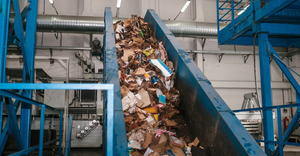The Challenges of E-Waste
In 2014, the world discarded of 41.8 million metric tons of electronics, and a recent report conducted by the United Nations University reveals that only 16 percent those electronics were recycled by officially sanctioned government or commercial enterprises.
The electronics that weren’t recycled were collected by individuals or private companies other than recycling companies, entered into a secondary market for used electronics, tossed in the trash or sent to a landfill or an incinerator.
Most of this e-waste was produced by the United States and China, which together make up approximately one third of the global waste stream.
Knowledge@Wharton has the details:
The average smartphone weighs about five ounces; a tablet, less than two pounds. Yet in 2014, the world threw away 41.8 million metric tons of electronics. That figure includes more than just smartphones and laptops, of course. Electronic waste, or e-waste, is composed not only of phones, computers, tablets, TVs, printers, scanners and all things digital; it also includes “almost any household or business item with circuitry or electrical components with power or battery supply” — everything from lamps to clothes dryers — according to the United Nations University report, “Global E-Waste Monitor 2014.” The United States and China together generate nearly a third of the global waste stream (7.1 million and 6.0 million metric tons from the U.S. and China, respectively).
What happens to all this e-waste? Only 16% of the world’s e-waste was recycled by officially sanctioned government or commercial enterprises in 2014, says the UN report.
About the Author
You May Also Like


